Making classic Turkish börek at home is easy! There are many versions, but this is the one I make most often. Simple to make, and absolutely delicious.
To a Turk, there are few dishes as reminiscent of home as börek. While its exact origins is unclear, the dish is popular throughout the former Ottoman empire and by many considered quintessentially Turkish.
Börek is easy to make at home, and many Turks often do. It’s also a popular snack on the go, as cafes specialising in börek are never far away, wherever in the country you may find yourself.
What is börek?
Börek is a delicious layered pastry made from filo pastry and a filling. Because the pastry is usually bought ready made, it’s an easy and quick meal to put together at home.
Börek comes in endless shapes and sizes, from the rustic tray versions (similar to lasagna) to more elaborate coils or even cigar shaped börek. The latter looks similar to spring rolls (indeed, Asian restaurants in Turkey often translate spring rolls as “Chinese börek”), though their flavour is completely different.
- Try this: Crispy cigar börek with spiced lamb (non-traditional recipe)
- Try this: Rose shaped börek
The most common filling is with cheese, of which feta cheese (known as beyaz peynir in Turkish) or cottage cheese (lor peyniri in Turkish) usually feature. Spinach or flat-leaf parsley may be added. Other popular fillings include minced meat, potato or plain spinach.
How to ensure the börek is perfectly moist
Making börek at home is simple. Although experience helps in nailing the texture, it’s rare for even beginners to fail. Sure, it may end up looking a little more rustic looking than that of a Turkish grandma who’s been making them for 60 years The flavour, however, is usually delicious nonetheless!
The experience is helpful because not all filo pastry is created equal. If you’ve got access to a good Turkish or Middle Eastern grocer, chances are you’ll have plenty to choose from.
Which filo pastry/yufka to choose
Filo pastry, known as yufka in Turkish, is an unleavened dough stretched paper thin. It’s used to make layered baked goods such as börek and baklava.
While you can make your own, most people buy ready made filo pastry from their local shop. In Turkey, most places will have a local yufka maker. This ready-made pastry is briefly cooked before packing, meaning it may have a few char marks. It may also dry out more quickly.
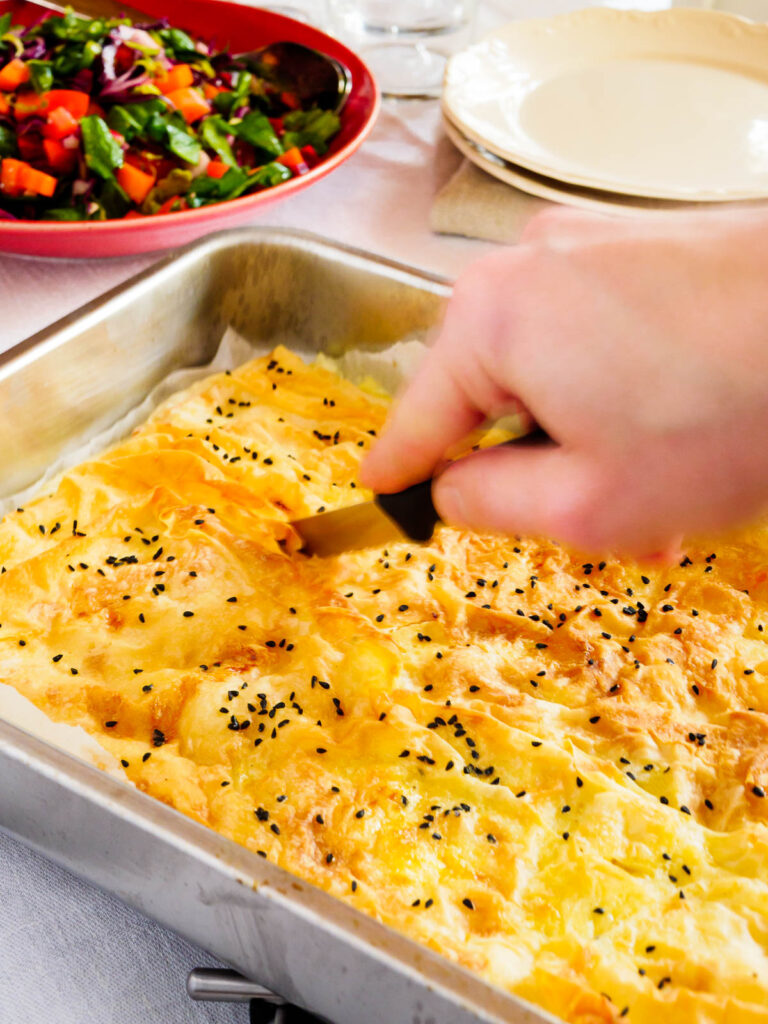
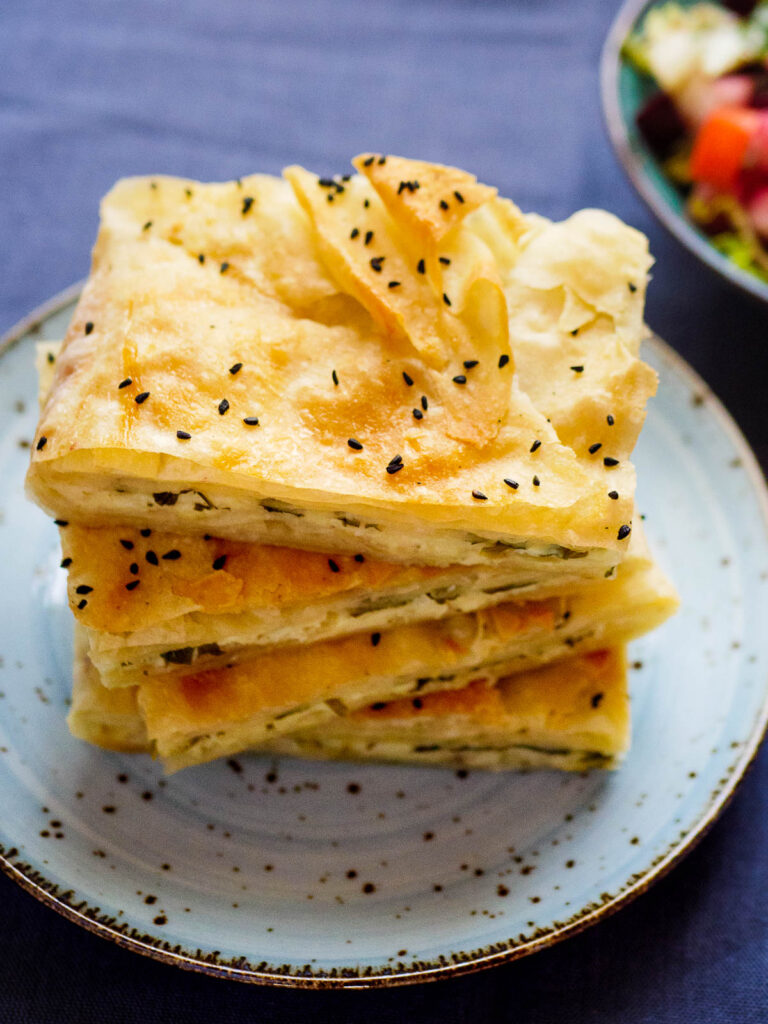
There are two primary types of filo pastry.
One, so wafer thin as to be virtually transparent, is used for baklava and other millefeuille-like baked goods. These typically come in rectangular shapes and is usually a creamy white colour with no spots. There may be starch or flour in between layers to keep them separate. Each sheet of filo for baklava usually weighs in at 15-20 grams (about ½ oz).
The other type is slightly thicker, usually circular and much larger. It usually has golden spots on it from cooking and looks much like a thin flatbread. Each piece usually weights in at around 150 grams (5-6 oz). This is what’s usually used for Turkish börek.
That’ said, if the only filo pastry you can get your hand on is the type made for baklava, you can still use it to make börek. Just use them in double layers. By this I mean taking off two sheets at a time, and using them as if they were one. This makes them a little thicker, giving a better texture to your börek. Not to mention making the process much faster!
The liquid for making börek moist
For your börek to become deliciously moist, you need to add liquid to the layers of filo pastry. Each has their own preference for what this liquid should be.
For a super crispy börek, you can just brush with oil or melted butter. For the homey, comforting Turkish tray börek we’re looking to make here, a mixture of egg, olive oil, milk and yoghurt is my favourite. The slight tanginess of the yoghurt and light richness of the olive oil adds just what I’m looking for here.
Since I’m using quite a lot of it, I make sure to use a good quality extra virgin olive oil. A good olive oil will never make your food greasy, just extra delicious! I don’t want my börek to taste of olives, though, so I use a mild flavoured olive oil.
How much liquid to use when making börek
The experience part comes in when using the liquid. Each batch of filo pastry will not be the same. Sometimes it will be moist, in which case it’ll need just a little liquid. Other times, the pastry may be a little dry. In those cases, use more liquid.
As such, you will need to judge for yourself how much liquid each batch of Turkish tray börek will need.
Don’t worry too much about it, though. I assure you it’ll still come out delicious! And just make a mental note to adjust next time.
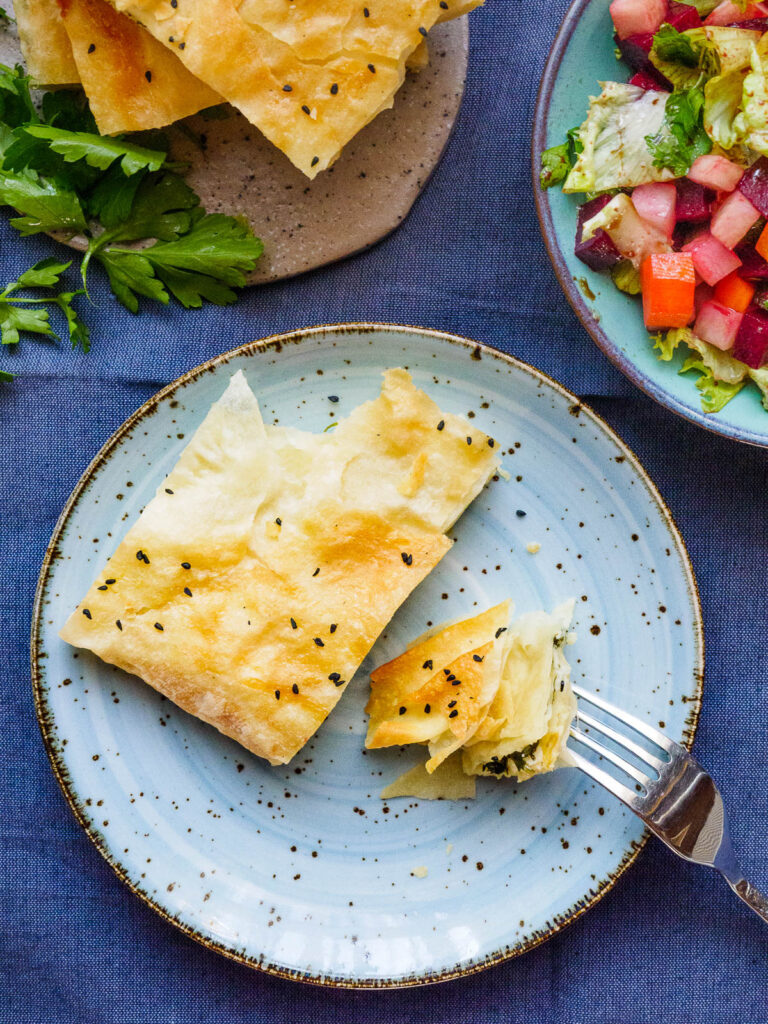
If you use too much liquid, fhe final börek will be quite dense and compact. Use too little, and it will be dry. For this reason, I always prefer erring on the side of using a little too much rather than too little.
How to layer a Turkish tray börek
There are three steps to layering a Turkish tray börek.
First, you need to cover the base and sides of your tray. This ensures the filling is trapped inside and nothing oozes out. Make sure to grease your chosen tray first, or use baking parchment.
Second, you need to layer up the inside with a combination of filo pastry and filling. You can brush and layer each layer flat on top of each other, but I prefer a more rustic approach. Instead,
I roughly tear off pieces of filo pastry and dip them partially in the liquid. I then lightly rub this piece so it’s covered in the liquid nearly all over. Finally, I lay these pieces not flat, but wavy, into the börek. This helps make the börek airier and lighter compared to using flat layers.
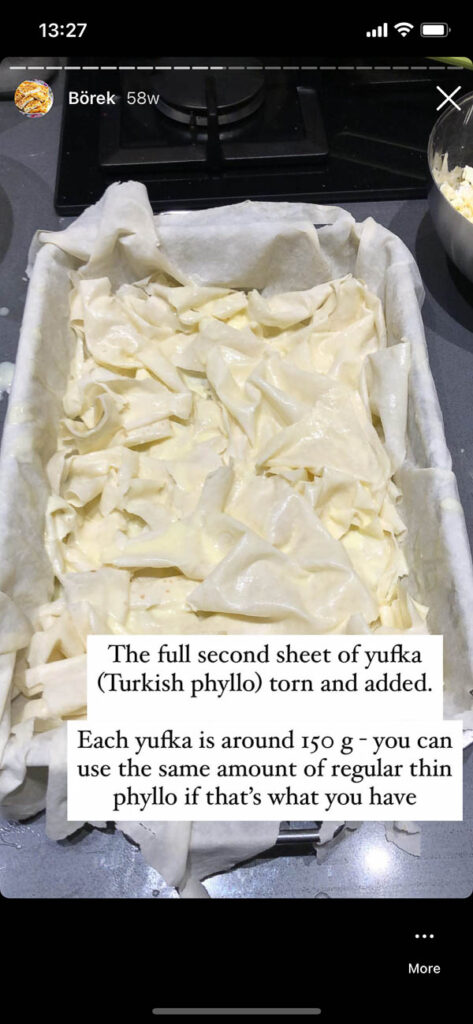
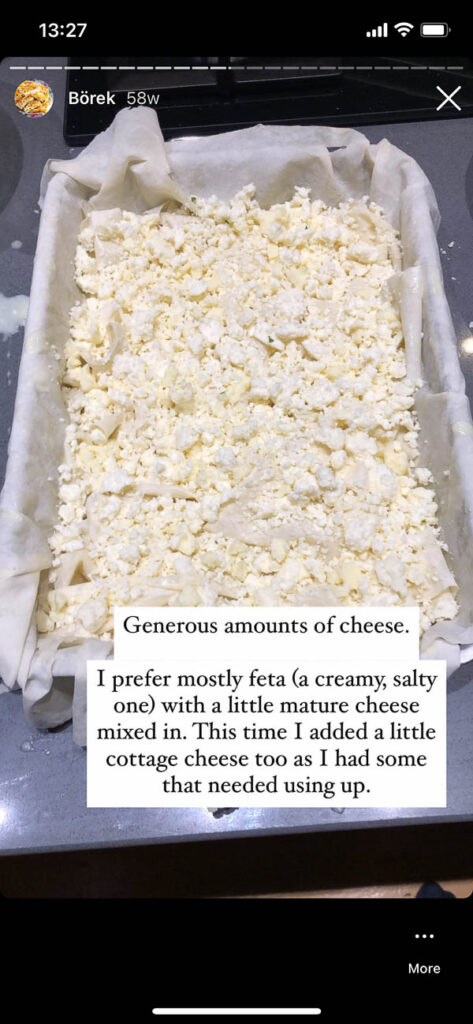
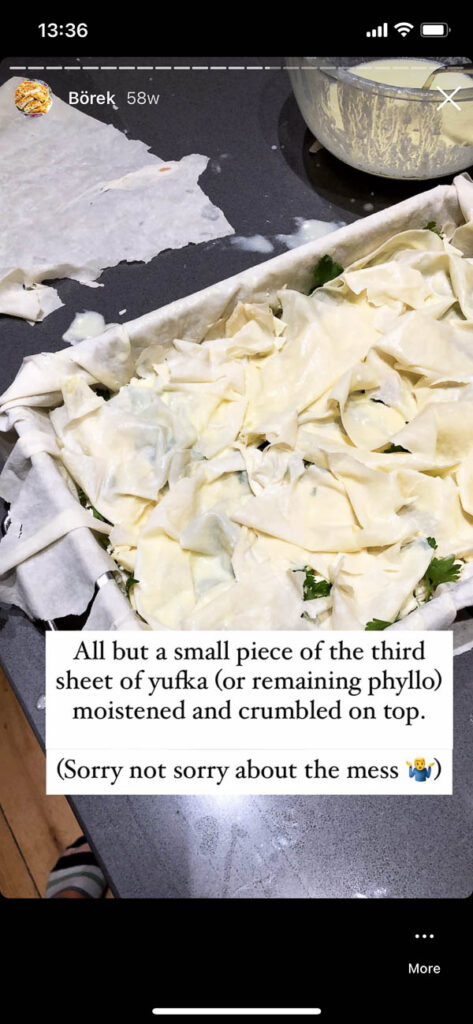
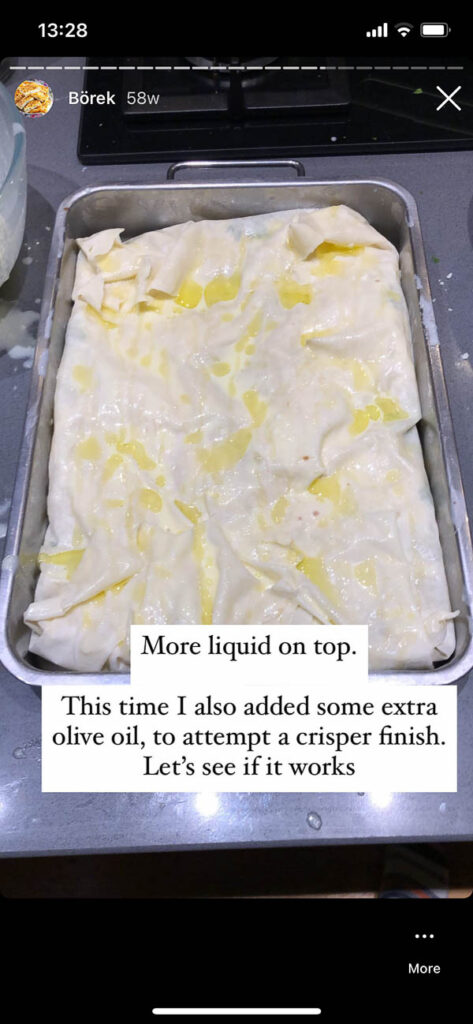
Finally, you seal the börek with a layer of filo pastry onto which you fold the sides to close the börek and sprinkle over a generous amount of nigella seeds.
The black nigella seeds have a slightly bitter flavour which works perfectly with the richness of the börek and its filling. They’re worth seeking out, but if you can’t find them, substitute sesame seeds or omit.
For a step-to-step walkthrough, see my Instagram Stories highlights (from which the pictures above are taken) on how to make börek here.
What to serve with Turkish börek
Turkish tray börek is best served luke warm or at room temperature. I like enjoying it with a simple salad and a freshly brewed cup of Turkish tea. Or Early Gray from a tea bag, if I’m too lazy to make proper Turkish tea.
I usually serve börek as a light dinner, but it’s also delicious for lunch or even breakfast.
Any leftover börek can be stored in the fridge for several days. To reheat, simply cook in a non-stick pan straight from the fridge over a low/medium heat for a few minutes. You want the outside to turn crispy (but not burnt), while the centre should only become lukewarm.
Enjoy!
More savoury Turkish bakes
Turkish cuisine has a wonderful array of savoury baked goods. Börek is but one of these.
I like making pogaca on occasion. These soft and flaky pastries are a favoured breakfast on the go for many Turks, but they’re equally brilliant for bringing along on a picnic or hike.
And if I feel like something similar to börek, but made with fresh dough, I go for gözleme. A wonderful griddled flatbread which you can fill with anything you like. My favourite is potato gözleme.
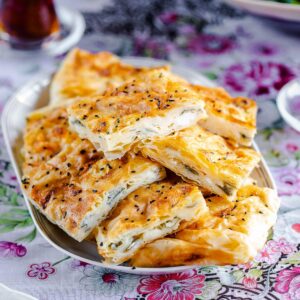
Turkish tray börek with cheese (Peynirli tepsi böreği)
Ingredients
- 1 egg
- 150 ml olive oil, I use a mild extra virgin, plus extra to grease the tray and for topping
- 75 ml Greek yoghurt
- 75 ml whole milk
- 3 large filo pastry (yufka), (c. 450 g/1 lb), or equivalent thin filo pastry (see notes)
- nigella seeds, or sesame seeds, to sprinkle
Filling
- 175 g feta cheese, crumbled
- 75 g matured cheese, e.g. cheddar or Turkish eski kaşar, shredded
- 15 g flat leaf parsley, leaves only, roughly chopped
How I make it
- Preheat the oven to
200 °C (fan). Grease 1 medium sized oven tray (mine is 34×24 cm (13½ x 9½ in)) well with olive oil, all the way to the top of the edges.
- Whisk the egg and olive oil, then add the yoghurt and whole milk and whisk again until smooth. (See recipe notes for alternate amounts.) Set aside.
- Mix the cheeses and set aside.
- Place one sheet of yufka in the oven tray, so it completely covers the base and sides in a single layer. Cut off any excess, making sure to leave at least 2-3 cm (1 in) over the top of the tray on each side. (If you’re using thin filo pastry, see recipe notes below.)
- Spread a couple of tablespoons of the egg mixture on the yufka. Tear the second sheet of yufka as well as the excess you cut off into large pieces. Dip each piece into the egg mixture and layer it in a wavy shape, so all of the base is covered. Each piece of yufka should be moist, but not excessively wet (see text above for more details).
- Scatter the cheese mixture evenly into the tray and top with flat leaf parsley.
- Tear the third and final sheet of yufka into large pieces, keeping a roughly rectangular piece slightly smaller than your oven tray separate. Dip the yufka pieces (except the rectangular one) into the egg mixture and layer them in a wavy shape, just like the previous layer. You should be able to cover all of the filling with this.
- Place the remaining rectangular piece of yufka on top, then fold in the sides, making sure to brush with the egg mixture as necessary. Brush with more of the egg mixture on top, but don’t overdo it. You may not need everything. For an extra crispy top, drizzle a tablespoon or so of olive oil on top.
- Sprinkle the börek with nigella or sesame seeds. Bake in the middle of the oven until the börek is golden on top and cooked through, 30-40 minutes.
- Leave to cool, then cut into 10-12 pieces. Enjoy lukewarm or cooled. See notes below for storing and reheating what won’t be consumed the same day.


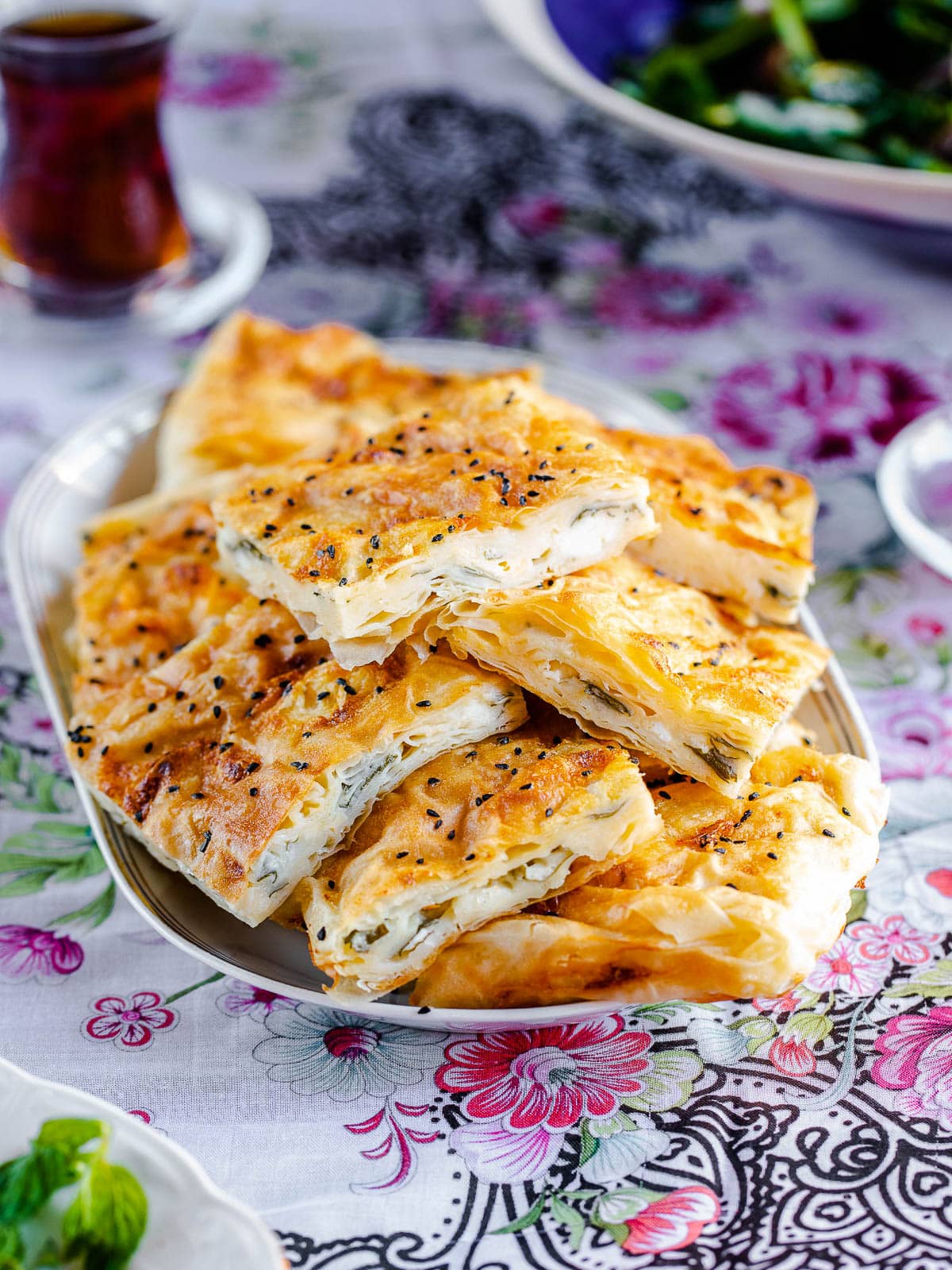

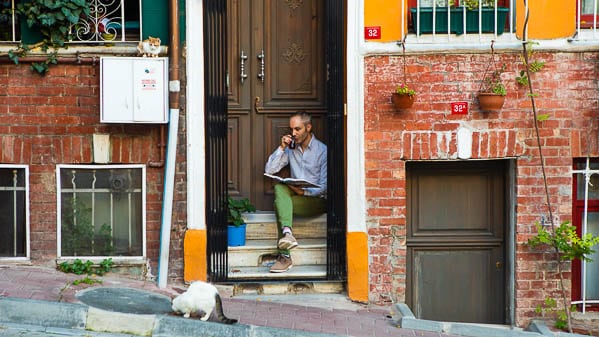
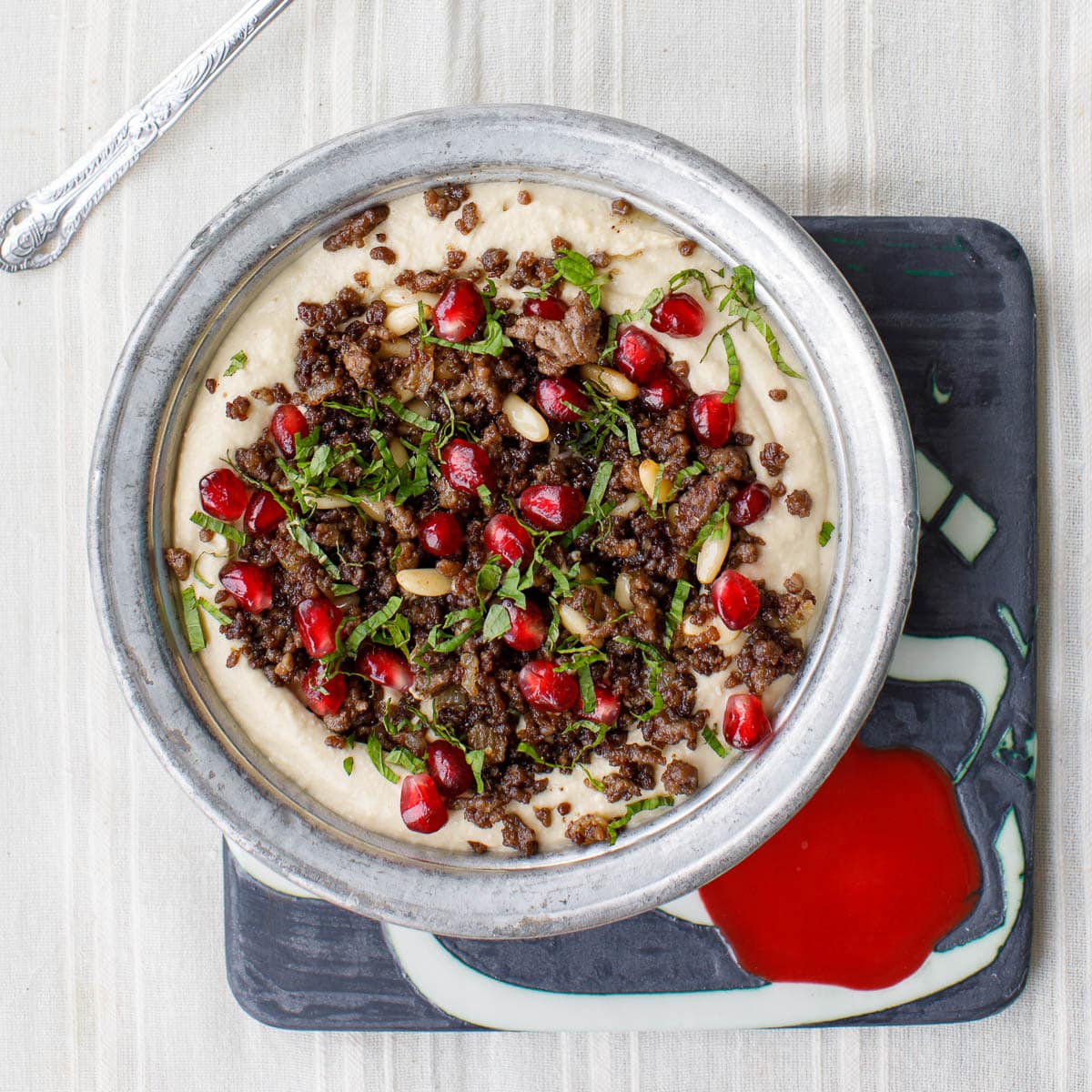
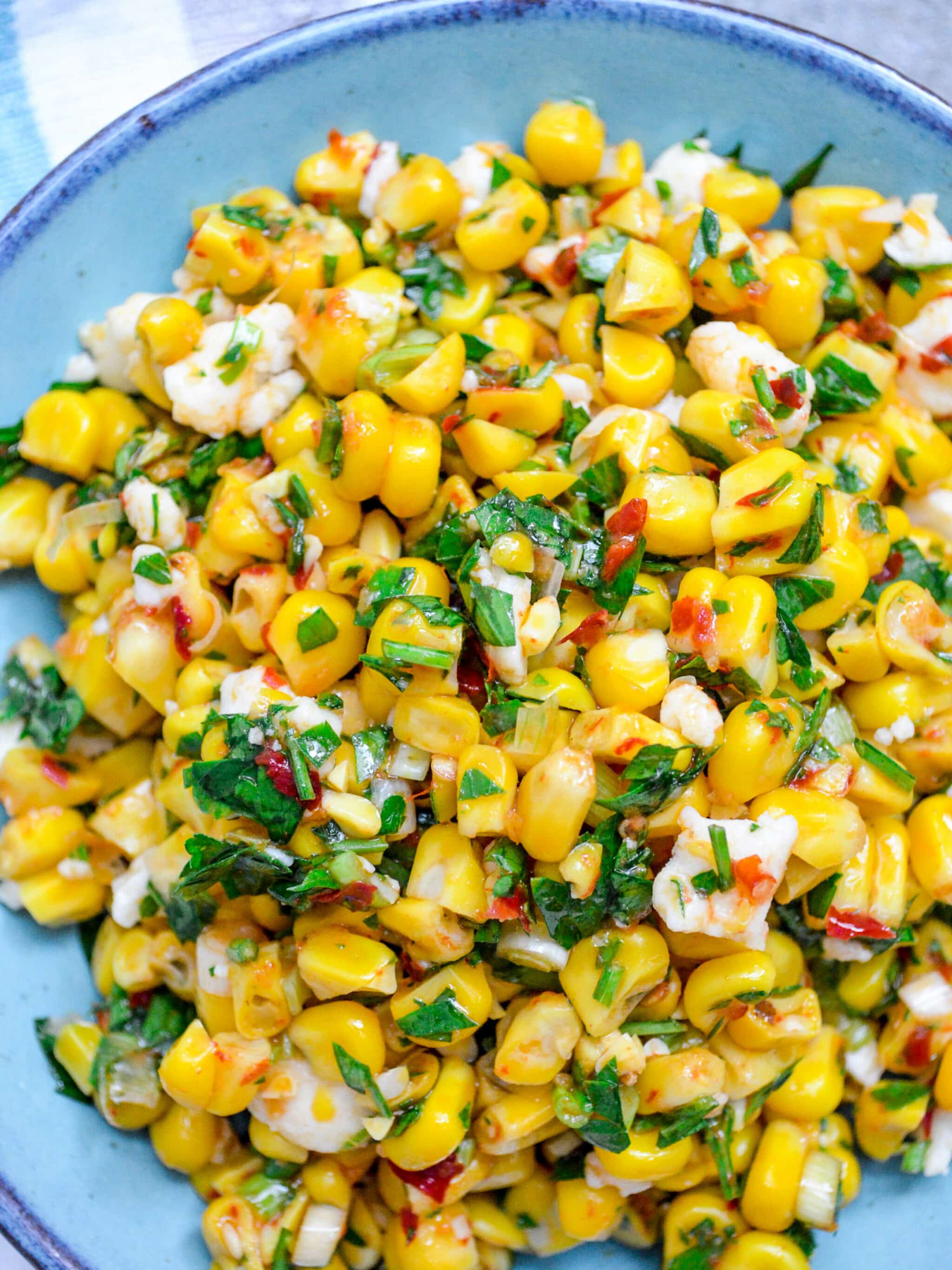
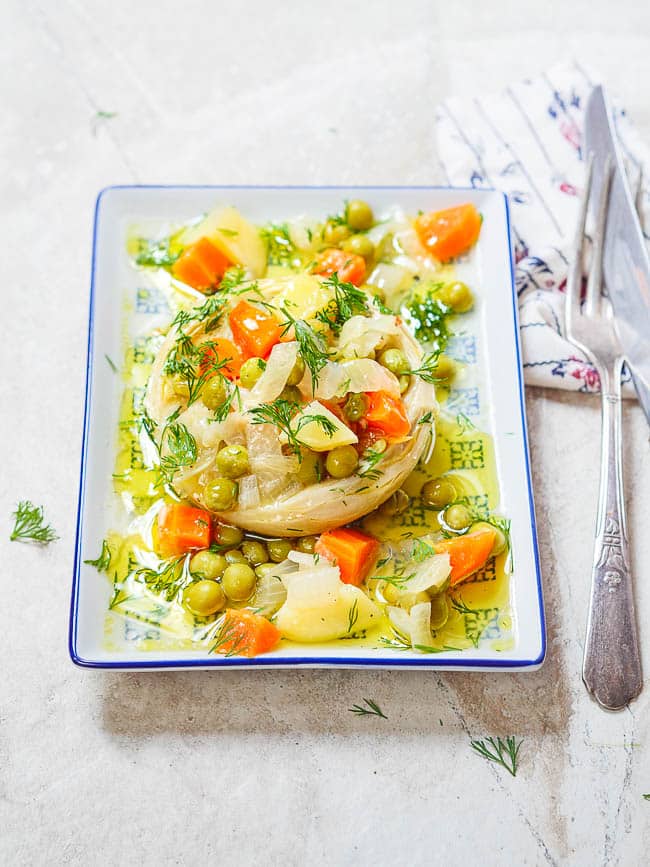
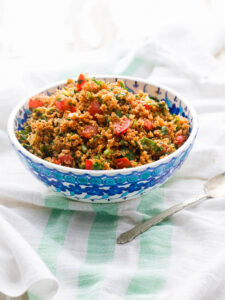
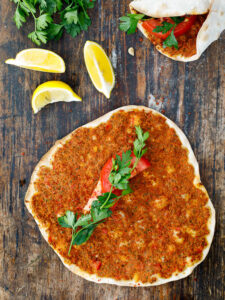
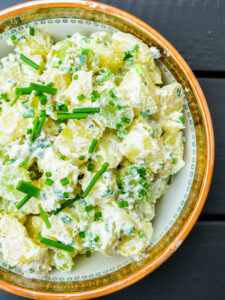
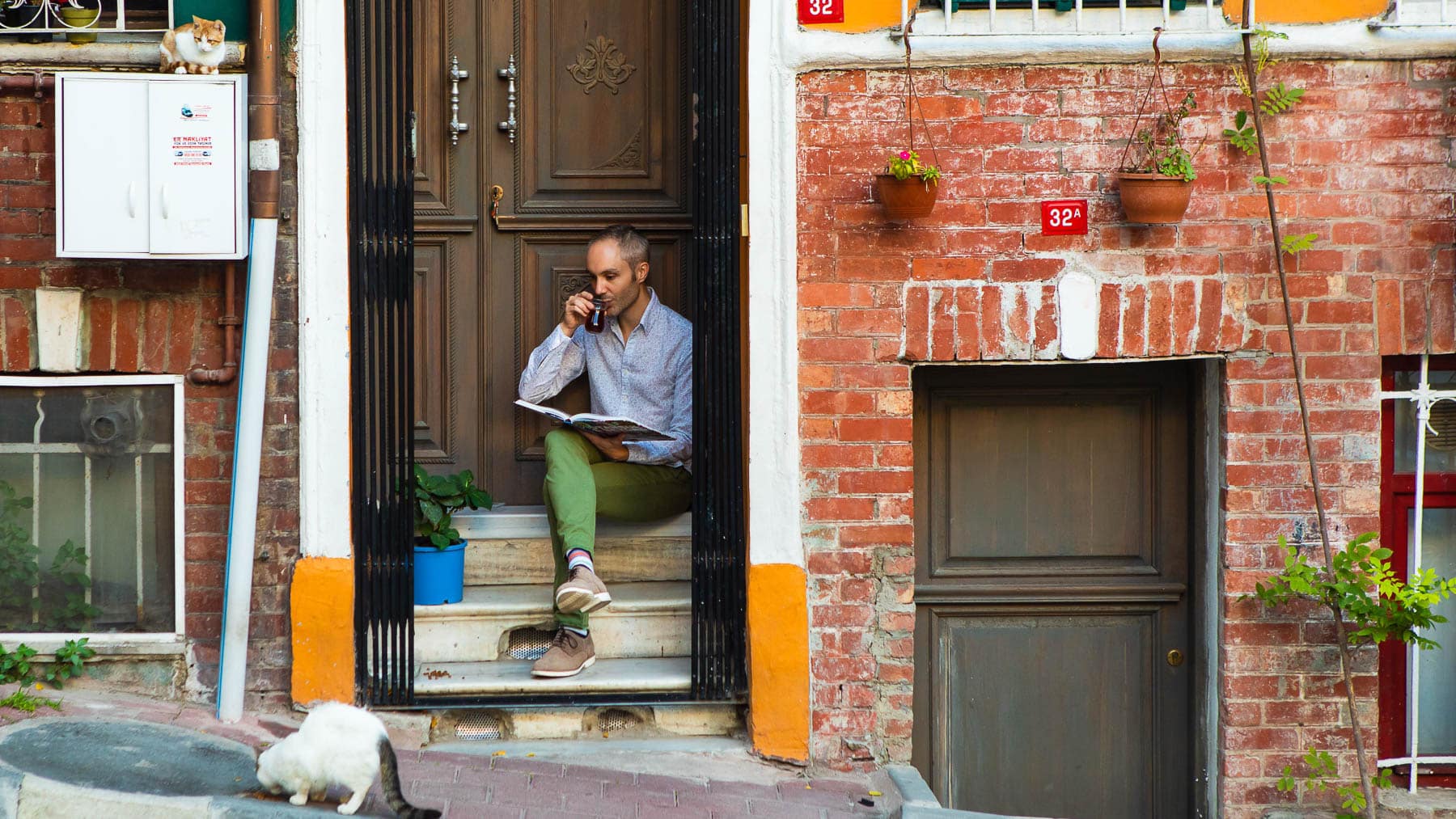
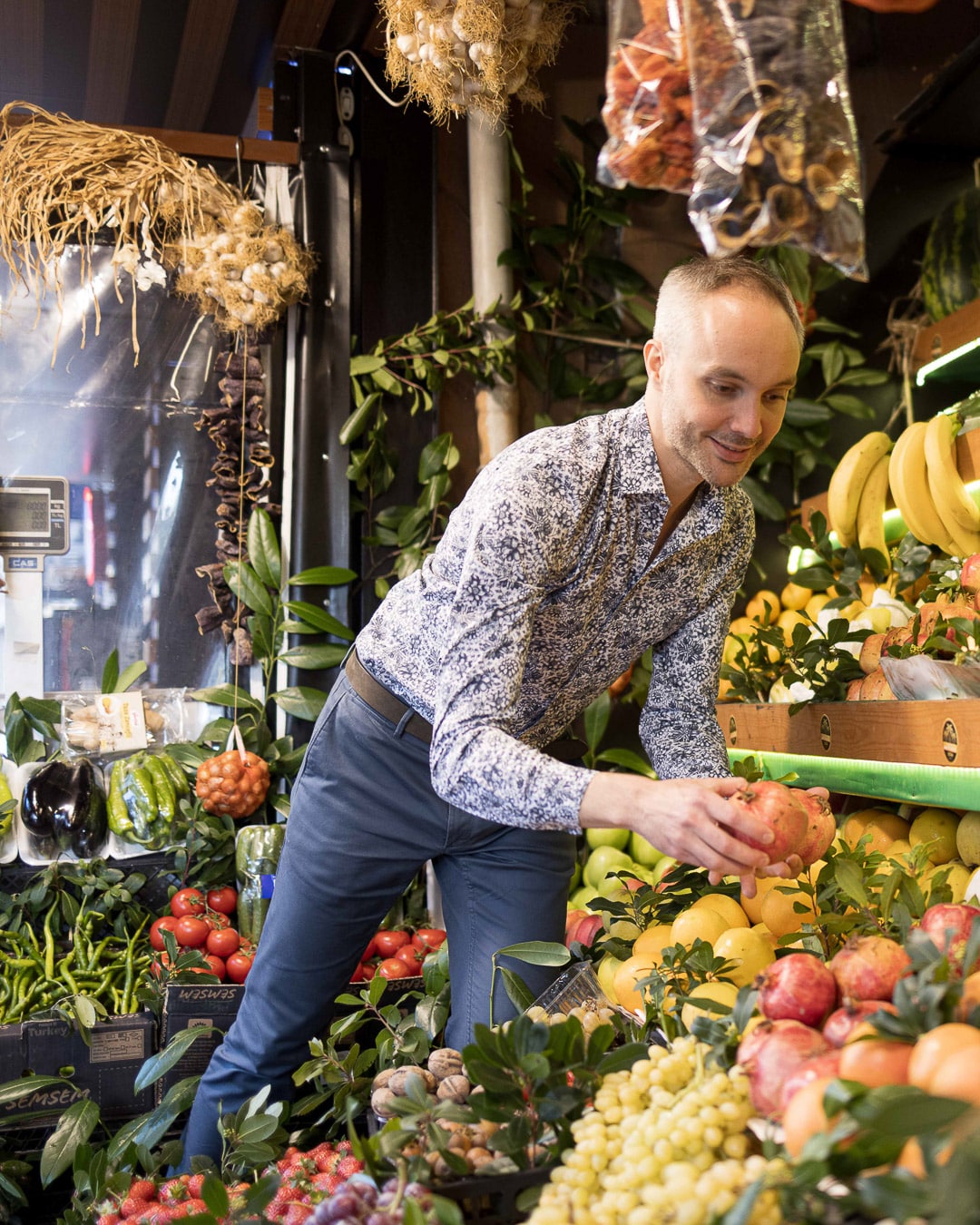


3 responses
Thank you Vidar. Your recipe is absolutely yummy and much appreciated. I made two. The first was as your recipe exactly. The second I omitted the eggs and replaced the animal products with plant based. It was delicious both times. Again thank you. Magda
Great to hear it worked well in a plant based version, too! It’s a very adaptable recipe. Thanks for sharing with us.
Thanks a lot for your recipes and thorough explanations, so very helpful!